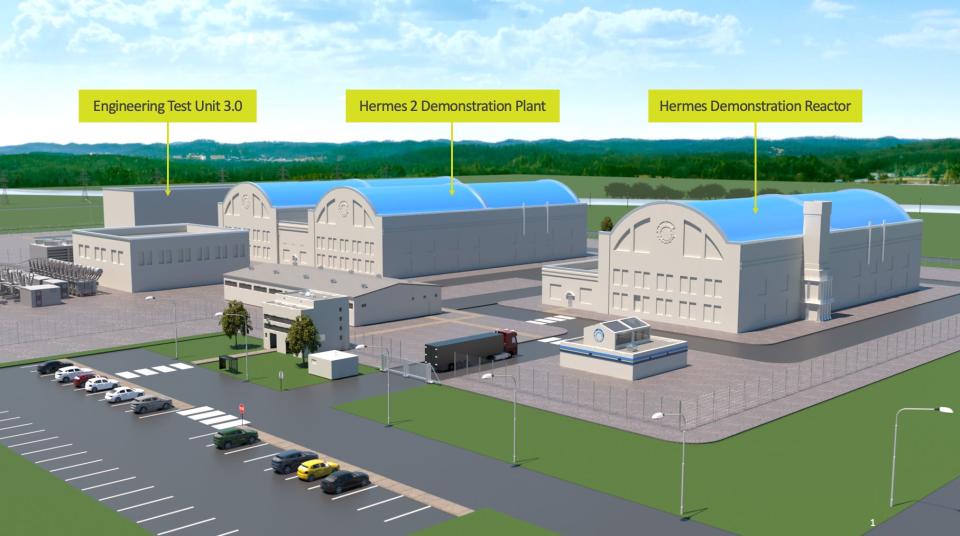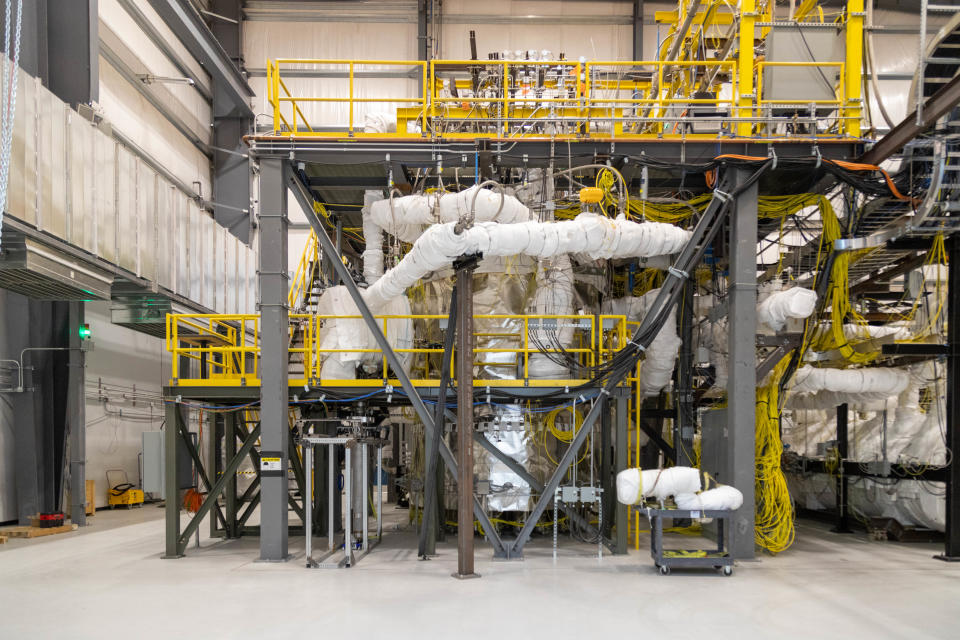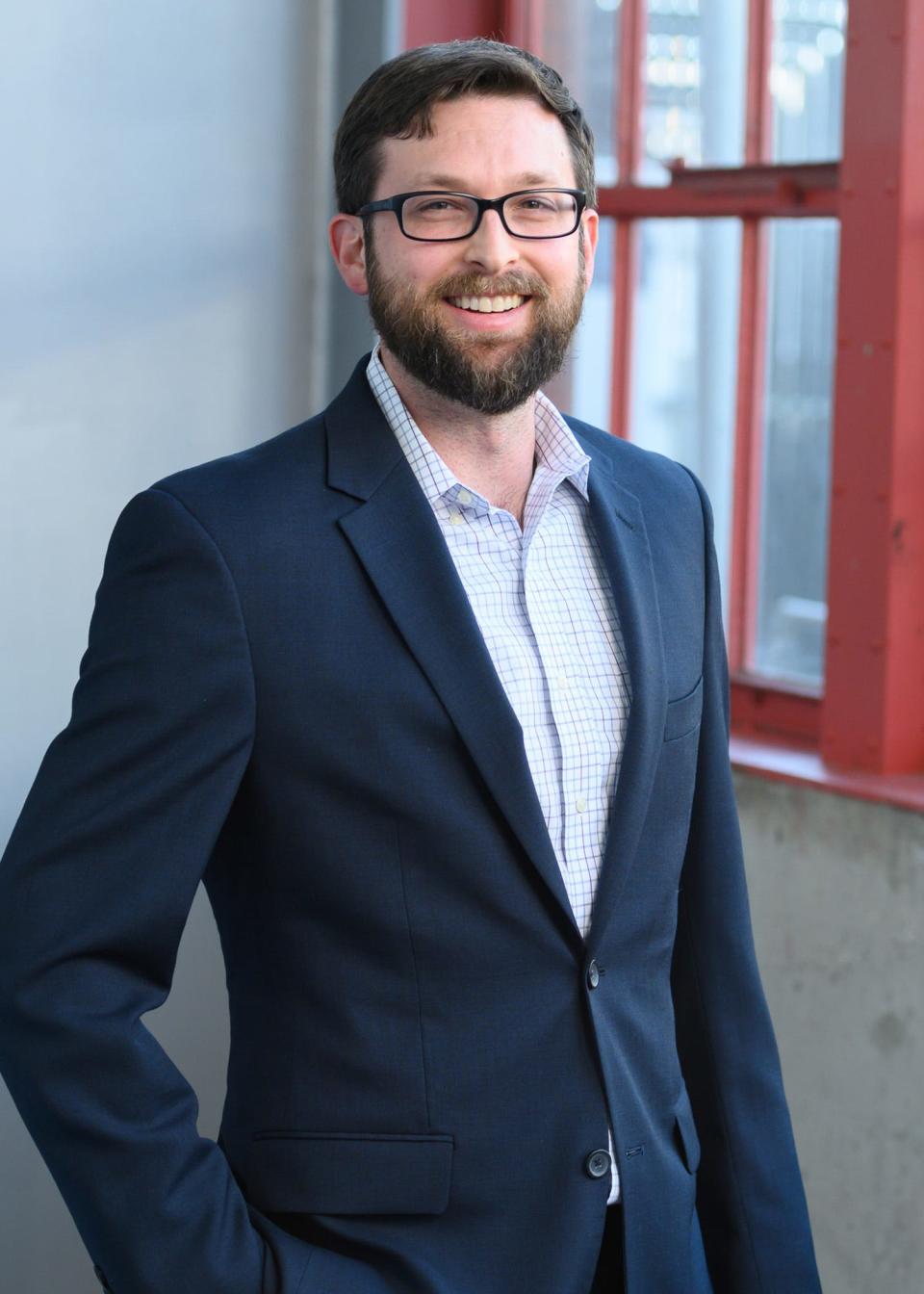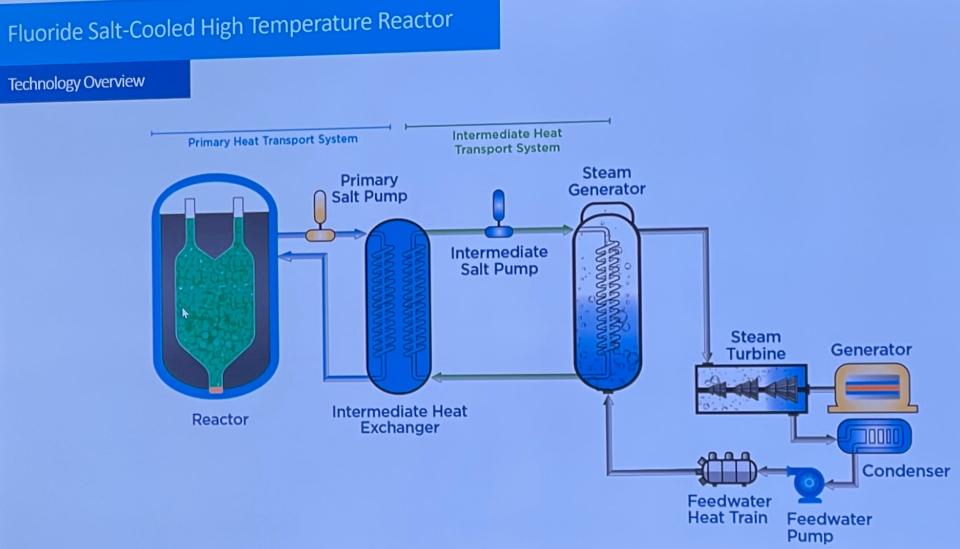Oak Ridge may become home for three salt-cooled demonstration reactors
If Kairos Power’s second application for a construction permit is approved by the U.S. Nuclear Regulatory Commission (NRC), Oak Ridge’s Heritage Center Industrial Park will likely be the site for three Hermes salt-cooled demonstration reactors, instead of one reactor that emits only heat to the air, as originally reported. The two additional test reactor units would form the heart of the planned Hermes 2 Demonstration Plant, which would produce a small amount of electricity for the grid.

After excavation of the K-33 site starts this year, the first building to be erected will house a non-nuclear Engineering Test Unit (ETU 3.0), a mockup of the planned first Hermes Demonstration Reactor using a non-nuclear surrogate for the uranium fuel that can withstand high temperatures. The first Kairos Power ETU (ETU 1.0) is located at the company’s facility in Albuquerque, New Mexico.
The source for this new information: Alex Kruizenga, senior director of salt chemistry and production for Kairos Power, which is headquartered in Alameda, California. He was speaking during a virtual presentation in mid-February to a Friday Lecture class of the Oak Ridge Institute for Continued Learning (ORICL). Mike Laufer, chief executive officer and co-founder of Kairos Power, first announced the Hermes 2 plant proposal in a webinar to local stakeholders on June 27, 2023.
On Dec. 12, 2023, the NRC voted to issue a construction permit to Kairos Power for the Hermes demonstration reactor, which the company said will show its capability to deliver clean, safe and affordable nuclear heat.
The high-temperature nuclear reactor, which will be cooled by a fluoride salt, was the first U.S. non-water-cooled reactor to receive a construction permit in more than 50 years. In September 2023, NRC accepted for review Kairos Power’s construction permit application for the Hermes 2 Demonstration Plant, which was submitted in July. The demonstration plant would consist of two fluoride-salt-cooled high-temperature reactors (FHRs) with heat exchange systems for producing steam to generate electricity that can be fed to the grid.

Kruizenga said that the first Hermes demonstration reactor, which is expected to be operating by 2026, will produce 35 megawatts of heat. If the Hermes 2 plant with the steam generator is built, its two 35-megawatt-thermal reactor units together would generate 28 megawatts of electricity before the end of the decade.
'No place we'd rather invest in ... our operations than Oak Ridge'
Reached for comment, CEO Laufer stated, “Kairos Power hopes to build on the successes of the ETU series and the first Hermes demonstration reactor by building the Hermes 2 plant to supply clean electricity to the grid. Certain things must fall into place before we can commit to deploying this new iteration, including a de minimis level of commitment from off-takers – an organization willing to purchase the electricity. However, there is no place we’d rather invest in the continued growth of our operations than Oak Ridge.”
The company’s goal is to build its first commercial power plant somewhere in the United States by the early 2030s. It would be a multi-unit plant, with each fluoride-salt-cooled high-temperature plant producing roughly 140 megawatts of electricity.

Kairos Power’s goal, Kruizenga said, is “to compete with natural gas in the U.S. electricity marketplace because natural gas has been one of the lower-cost sources of power. A huge amount of natural gas capacity was installed in the early 2000s, but a lot of those gas turbine power plants will near the end of their lives in the 2030s and 2040s.
"We at Kairos Power have a big opportunity to develop our FHR technology through the next decade to ready it to replace natural gas, which is a fossil fuel. Appropriately, Kairos is the Greek word for the opportune moment," he said.
The FHRs will incorporate two technologies developed years ago at Oak Ridge National Laboratory. The Hermes reactor will have spherical fuel pebbles the size of table tennis balls based on the TRISO (tristructural isotropic) fuel ORNL researchers developed for the lab’s high-temperature, gas-cooled reactor program.
Each pebble will contain thousands of coated uranium fuel particles the size of poppy seeds. The uranium fuel, which will be 19.5% enriched in fissionable uranium-235, will be nested inside an advanced manufactured silicon carbide structure covered on the outside with graphite.
The silicon carbide layers have high melting temperatures and resist radiation damage and the pressure of fission product gases. The coated particles, or kernels, are designed to prevent the release of radioactive products formed when the uranium fuel fissions.
Kruizenga said that one nuclear fuel pebble undergoing fission can produce as much energy as the combustion of four tons of coal.
The heat generated by nuclear fission is carried away from the pebbles in the reactor vessel by a liquid salt coolant consisting of lithium fluoride and beryllium fluoride. Because the molten salt contains fluorine (F), lithium (Li) and beryllium (Be), it is called Flibe.
The molten salt used 60 years ago in ORNL’s Molten Salt Reactor Experiment consisted of Flibe mixed with uranium fluoride as both a liquid coolant and liquid fuel. The Hermes reactors will use Flibe only as a liqiuid coolant that picks up heat from the TRISO solid fuel pebbles.
In the proposed Hermes 2 Demonstration Plant, the Flibe will be pumped from the reactor vessel by the primary salt pump to an intermediate heat exchanger. Its heat will be transferred to the steam generator. The steam will turn a turbine, which spins the generator that will produce up to 28 megawatts of electricity.
Kruizenga explained that the intermediate heat exchanger will contain a different fluoride salt that will carry the heat from the primary heat transport system to the steam generator. The reason for inserting the intermediate heat exchanger into the design, he said, is to “to make sure that the reactor’s nuclear fuel is isolated by another step from the high-pressure steam in the generator because the reactor vessel runs at very low pressures, close to atmospheric pressure.”
The Kairos Power design for an FHR power plant, he added, will prevent high-pressure steam from accidentally leaking back into the primary heat transport system linked to the low-pressure reactor vessel filled with molten-salt-cooled fuel pebbles.
Because Hermes reactors will operate at low pressures, they will not require thick-walled vessels like those in pressurized water reactors (PWRs) present in two-thirds of the world’s nuclear power plants. That’s one way to reduce the cost of the FHR technology, and that’s one reason why Alvin Weinberg, ORNL director from 1955 to 1973 and co-inventor of the PWR, championed the salt reactor concept.
Kruizenga described the progress made at its installations across the country, from California to Charlotte, North Carolina. At its Alameda headquarters near Oakland, California, researchers are working at the Rapid Lab and Salt Lab. The Kairos Power Southwest testing and manufacturing facility in Albuquerque includes the TRISO Development Lab, which is optimizing manufacturing processes that will be implemented at Los Alamos National Laboratory to produce TRISO fuel pebbles for Hermes.
Flibe is made at Kairos Power’s Molten Salt Purification Plant in Elmore, Ohio. In April 2023, the first batch of Flibe was shipped from Ohio to Kairos Power Southwest.
Kairos Power has an Instrumentation Lab in Rexford, New York for making sensors and automated equipment and a licensing office in Charlotte. And, of course, Oak Ridge is the site for the first of possibly three planned demonstration salt-cooled reactors.
Kruizenga reported that the Engineering Test Unit (ETU 1.0) in Albuquerque is a non-nuclear mockup of the actual Hermes reactor. After 1,000-plus hours of pumped salt operations, ETU 1.0 staff are testing how well the reactor mockup with non-nuclear pebbles will work with Flibe coolant flowing through the vessel.
In other ETU 1.0 testing highlights at a temperature exceeding 550 degrees Celsius, the Kairos Power staff loaded 12 metric tons of molten salt into the largest Flibe system ever built. They demonstrated online refueling with surrogate fuel via the Pebble Handling and Storage System.
In addition, the ETU staff has achieved the highest-ever Flibe flow rate of up to 3,000 grams per meter and logged more than 25,000 strokes of the reactivity control system. Kairos Power also commissioned a first-of-its-kind chemistry control system to continuously monitor the purity of Flibe in the system and flag any signs of impurities.
“The lessons learned from the ETU program will inform the design and operation of the Hermes demonstration reactor in Tennessee,” Kruizenga said.
The company has formed an advanced nuclear alliance called the Kairos Power Operations, Manufacturing and Development Alliance (KP-OMADA), he added. “It brings together leading North American utilities and generating companies to collaborate on the advancement of KP-FHR technology.” Participants in the alliance are Bruce Power, Constellation, Kairos Power, Southern Company and the Tennessee Valley Authority.
“Everything we do at Kairos Power is driven by our mission to improve people’s quality of life while protecting the environment,” he said. “Our commitment is to engage and support local communities; prioritize diversity, equity and inclusion; selectively build on brownfield sites and deliver high energy density with low land use.”

This article originally appeared on Oakridger: Oak Ridge may become home for three salt-cooled demonstration reactors

